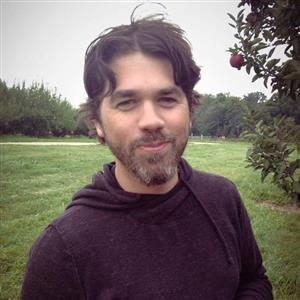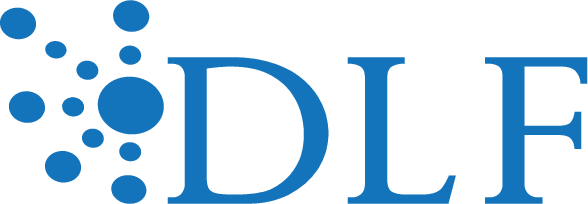NDSA Member Profiles is a new collaborative series from the Interest Groups of the NDSA. The series is inspired by past NDSA traditions such as Insights Interviews, and aims to build on and expand these types of interviews with featured NDSA members to allow for better shared communication and collaboration around the work of digital stewardship and preservation. Topics range from member questions and insights for the NDSA community to sharing failures, discoveries, and anything else in between.
If you or your institution is interested in being featured, please contact Lauren Work (lw2cd@virginia.edu) or Sibyl Schaefer (sschaefer@ucsd.edu). The interview below was conducted by Lauren Work and lightly edited for length and content.
Matt Schultz is the Metadata & Digital Curation Librarian for Grand Valley State University (GVSU) Libraries, where he helps advance preservation and discovery strategies for the university’s unique, distinctive and special digital materials. GVSU Libraries joined the NDSA in Summer 2017 and Matt began engaging with the NDSA community, primarily through the Content Interest Group.

Describe your position, and how you spend most of your working time.
As the Metadata & Digital Curation Librarian, I work regularly with a team of functional specialist faculty and professional support staff to ensure and improve discovery and use of the Libraries’ cataloged collections. I engage in technical curation for all of our uniquely created/acquired digital materials. I also work closely with our teaching faculty to accomplish good data management solutions for their sponsored research projects. In some ways I see these as three separate hats to wear, but there is also a lot of overlap in terms of focus and concern for the digital materials. That being said, it is a genuine challenge to balance and deepen the technical expertise needed to do each of these areas justice. Thankfully, GVSU Libraries is an incredibly collaborative, flexible and supportive environment. So I get a lot support.
Do you have a ongoing or finished digital stewardship project that you are particularly proud of that you would like to share?
Our Libraries has so many projects that we are engaged in regularly and at any given time, many of which involve external partners. I’m really proud of the collaborations. But I would say one of the projects I am most proud of involved rescuing a faculty member’s data from a couple of aging legacy Macintosh computers. We didn’t have a green light to bust into the encasings to extract the hard drives so we had to get very creative to scare up the peripherals we needed and install the associated software drivers.
The drivers were the trickiest because we had to get them on to the computers using ZIP disks that were appropriately formatted for the Macs and their flavors of OS. It was a lot of stop and go, a lot of trial and error. Eventually we were able to connect old ZIP drives to the Macs and copy the data off. In the end it was not the professional digital forensics project that I would have liked to have seen happen, using write-blockers and imaging the drives with something like Bitcurator, but it was a bit of a sleuth job nonetheless. What keeps me in this job are the puzzles and challenges and the thrill you get when you move old digital information forward in time.
What are your current challenges working in digital preservation?
I wrote our Libraries’ first digital preservation policy. As with many good digital preservation policies you can find online, an institution will often set aside some space in those documents to inventory their challenges. Our policy also includes a full list of the challenges we both currently experience and anticipate encountering as time goes by.
To just call out a few, I would say that we would like to have 1) a better layer of support for versioning changes to our digital materials over time; 2) more curatorial control over off-site replications of our data; and 3) sustainable strategies and tools for auditing the integrity of our locally stored digital materials. These are really infrastructure challenges. Our Libraries has built into our current 2016-2021 strategic plan the boosting of our local capacity and infrastructure, which I am excited about. We’ve already made some great strides towards launching our own locally-hosted access platforms running on Omeka and Digital Commons. It may take some time but I would eventually love to see our library and campus supporting a more scalable all-purpose repository. We’re excited by things like Hydra and Hyku and our short- to mid-term goal is to deepen our technical professional development, so that we can manage open source implementations like those (or others) on some savvier levels.
What have you found most beneficial from the NDSA community, and where do you think the NDSA has room to improve?
This is not an easy question to answer only because I am still on-ramping to some extent. But my engagement with the Content Interest Group was immediate and really welcoming. The facilitators and leaders for that group have not put up any barriers for someone to just dive right in and start contributing.
So, within the Interest group I’ve proposed a case study to document strategies for acquiring cloud-hosted data from donors and organizations, and I am looking forward to getting started on that activity. I was also affiliated with the previous iteration of NDSA as hosted by the Library of Congress, and I think the only thing I would say is that the production of new community resources sometimes felt a little over-driven by a small number of institutions and was often a little imbalanced in terms of the spreading out the work across any given interest group’s members. But I wouldn’t assume that the current interest groups are struggling with the same issues. Maybe just something to keep an eye on.
What recent digital stewardship discovery have you made? (This could be a tool, article, website, etc. that has helped you in your work.)
I recently learned about the efforts to form a persistent identifier registry geared towards disambiguating common researcher affiliation and citation use cases with respect to organizations/institutions. This is folding out from recent collaborations between Crossref, DataCite and ORCID. A working group has been established and has already articulated framing principles and a request for information (RFI) has been issued.
Though much more geared to scholarly publication and citation management, the building of an ecosystem to enlist the architecture of the web and other infrastructures with a focus on ensuring ongoing discovery and tracking for provenance are critical for preserving online information. I’d love to see more community-driven effort put into DOI and persistent identifier registries for a range of different published digital collection use cases and repository object management. I am intrigued by the business and service model for this newly proposed project.
Do you have an example of a digital preservation or stewardship failure you would like to share?
I have a couple of areas I could highlight. The first being that having recently gone through a major migration from use of platforms like CONTENTdm and Preservica to new platforms like Omeka and even Digital Commons, we could have used some tidier data models for our individual digital collections as we worked through that process. We had the models in formulated, there was simply not enough time to work through applying the data models as we moved from collection transfer to collection transfer. So it meant we were tidying on the fly and are now needing to go back and do some further cleanup and implementation. But migrations are always messy. So I don’t beat myself or our team up to heavily.
The other shortcoming we are experiencing is in the area of awareness-raising about the nature and importance of the work we do within the Libraries with respect to digital preservation. Our fellow liaison librarians, for example, might not fully understand what goes on within our Technology & Information Services (TIS) unit with respect to this work—simply because they spend the majority of their time on their own outreach work. It can be a lot to keep up with. But we do need to do a better job of pushing the importance of our digital collections management and preservation to the center of our services and finding ways to better engage that side of our house. We now have an Archivist for Public Outreach & Engagement that embeds with our liaison librarians and through my data management role I am also performing outreach and training to our liaisons. So I think we are moving in some positive directions.
What topics or issues do you wish the digital preservation community offered more expert guidance or robust documentation for?
This might come across as a little anathema within the community, but I honestly think we need to start fostering more conversations around the values and assumptions that are driving our priorities and our use/development of technologies for preserving digital information. I don’t think we step outside of the community and look at the bigger picture frequently enough and critically ask ourselves what sort of impacts we are making, or what the implications of some of our technology approaches are for this work on more societal and organizational levels.
What does the next year of digital stewardship hold for you and your institution? What are you working on next?
At our new Dean’s direction we are working through a really interesting set of facilitation frameworks that pull on methodologies such as appreciative inquiry and divergent thinking. This is in order to tighten up the collaborations and streamline operations across our different divisions when it comes to our digital stewardship work. We are about three months in and will probably be at the process through the end of the year. It is already yielding some really good signs for reaching a new “ideal state” and all of the stakeholders—including our Special Collections, University Archives, Scholarly Communications, and Technology & Information Services are getting excited about the new changes on the horizon. I think it is going to help us leg up even further into areas of research data management, digital scholarship, and digital humanities.
